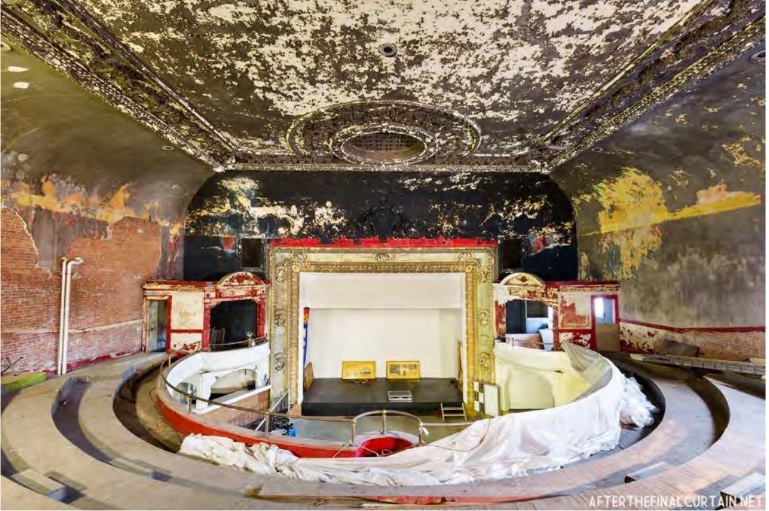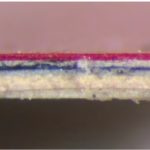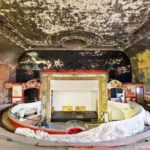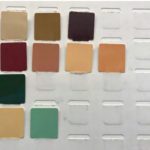[vc_row][vc_column][vc_column_text]
As the Strand Theater in the North End awaits its upcoming transformation, it is already revealing some secrets about what it looked like in its glory days. To aid in this, WHALE and the Cape Verdean Association commissioned a paint sample analysis from EverGreene Architectural Arts to investigate the historic paint palette used at the Strand. A total of 45 paint sample cores were extracted from the various surfaces and architectural elements in the theater to get to the underlying paint layers. These samples were then looked at under a microscope to determine the color of each layer, the theory being that the layers closest to the substrate are the oldest and likely represent the historic design scheme. The colors were identified using the Munsell standard of color notation, which identifies colors within a three-dimensional space through describing the hue, value and chroma. The hue is the basic color family, like yellow, red or blue; value is the relative lightness or darkness; and chroma is the intensity of a color.
The paint analysis revealed that the walls of the main theater were originally painted in an atmospheric, sunset-like ombré color scheme, with a peach, pink, and yellow coved ceiling that moved down to a ruby red at the lower elevations. Historically, dark red was a common color used in theaters because the human eye is less sensitive to red, which makes the room seem darker and provides more contrast with the lit stage or screen. Black or dark gray would do the trick too, but red achieves that darkness while maintaining a bit more style.
Atmospheric motifs were also very popular in theater designs, particularly in the early 1900s when the Strand was built, although precedents exist as far back as the sixteenth century in theaters such as the Teatro Olimpico in Vicenza, Italy. Coved ceilings were often used to give the audience the illusion they were viewing the performance outdoors, and many theater ceilings were painted to look like the sky, either with clouds or stars. John Eberson, a noted theater architect, is credited with popularizing the atmospheric design used in movie palaces starting in the 1920s. His theaters were designed to make the audience feel as if they were in an outdoor courtyard in an exotic location like Spain or Persia. The Strand might be an earlier example of a smaller theater attempting to replicate those atmospheric designs. While the paint analysis team at the Strand was unable to get samples from the main ceiling field to evaluate the layers, an article written about the opening of the theater described the ceiling as being decorated with a “dainty design of blue sky and clouds.” This would be in keeping with the motif revealed by the rest of the paint analysis.
WHALE would like to thank guest blogger Erin Burke for researching and writing this piece! If you’d like to see more of Erin’s work with historic interiors and restoration, visit her blog at www.whalingcitycottage.com.
[/vc_column_text][/vc_column][/vc_row][vc_row][vc_column][/vc_column][/vc_row]


































